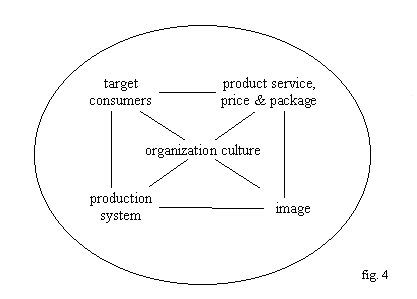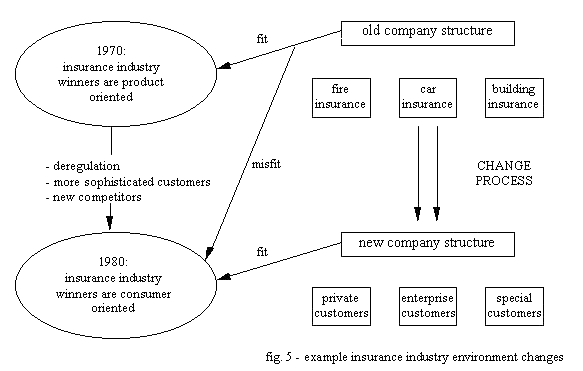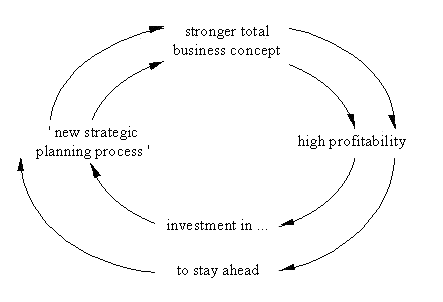|
The traditional forms of corporate planning systems were characterised by seperated plans who didn't correct the errors of earlier plans and consistently weren't achived.
In a stable environment where most of the influencing factors are well known and don' change a lot this form of planning system works pretty well.
The big environmental changes since the mid-80s led to a situation where companies were faced with quick changes and irreversible new trends, that made a plan scarcely relevant in the course of a few month.
The solution was the setting of focus from planning to implementation of action programmes and creating a new idea of strategy.
This new idea included as the main aspect the definition of strategy as the way to reach a superior goal and the form of finding solutions for this way. This is quite different to the understandings of strategy we had before, that included the methods of realisation as part of the strategy.
The main differences in detail are that before we assumed that all relevant knowledge is available at the beginning of the planning-process, whereas now we try to exploid the information just at the time we aquire it.
Nevertheless the basics for finding solutions are still the same: the financial forecasting and budgeting cycle. In fact the overall target is still the same, we only changed the form of finding the way to it.
Where the traditional planning process (shown in fig. 1) had ist goals, subgoals and action plans, the new strategic planning approach (as shown in fig. 2) is characterised by short run actions and learning steps.

Especially in bigger companies with different business areas it is important to treat this areas as distinct planning unit. Nevertheless it is more important than ever to examine interdependencies between diiferent areas so that these can be optimized. So individual area plans are harmonized for maximize benefits and reduce risks.
Success in a particular business area is not a result of any individual factor of success as for example cheap raw material or a promising invention. In truth it depends on a multitude of factors that all have to fit together. This situation of many elements inforcing each other in often called 'total business concept' and is the basis of long term success.

The strategic planning process (shown in fig. 3) starts with the redefinition of the following main elements (shown in fig. 4):

The harmony between these elements, created through analysing and understanding the market place, is not stable for all times, furthermore the connections between these elemnents loose their harmony as the market situation changes.
To prevent negative consequences structures and control systems have to be reorganized or even transformed to regain harmony.

The realisation of the total business concept reqires the creation of high leverage action plans (as shown in fig. 3). Based on the results of the strategic review the management focus on those actions relevant for a winning strategy. In addition there are five imporatant preconditions that have to be carefully planned:

|
The strategy has to be visible demonstrated since people believe actions rather than words.
|

|
The organisation structure must support the strategy. Organizational blockages are the major reason for a strategy failure.
|

|
Everyone in the company should exactly understand the strategy in order to set free all potentials.
|

|
performance standards have to be set challenging and capable to attain in a relatively short time. Further there have to be effective mechanisms for getting fast feedback on progress.
|

|
Performance is more a question of 100 changes of 1 % than 1 change of 100 %. This means that the problem solving is to be decentralized.
|

|
Every possible success should be shown to enhance motivation and reduce the image lag.
|
The new strategic planning process is a management instrument for maintaining a business in a so called 'self-reinforcing circle of success'.

With every cycle the depth of understanding of the company's strategic situation is more enhanced and the strategic language becomes more refined. By involving information systems and constant optimizing the internal business factors misfits are eliminated and the competitive strength of the business can be improved. Thus strategic thinking and action become a unity.
|










